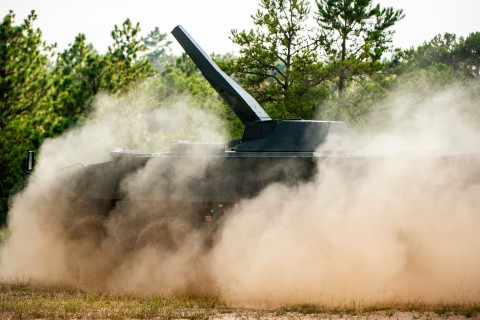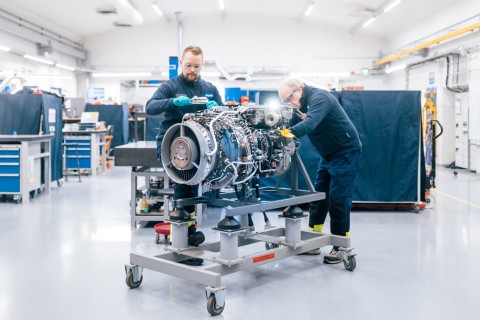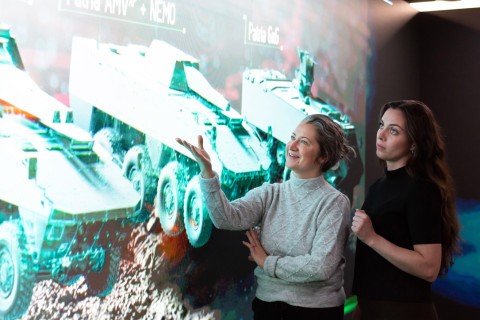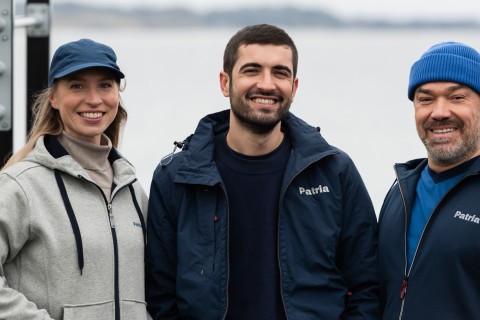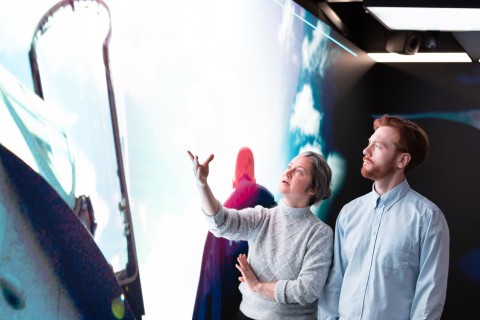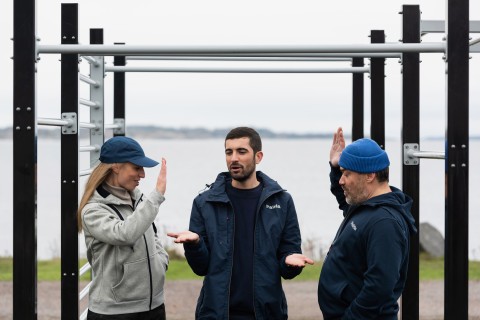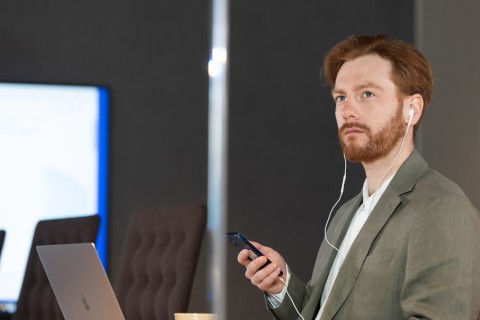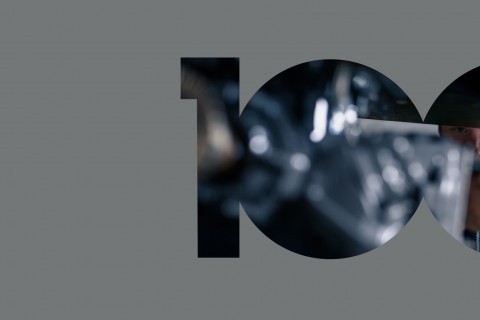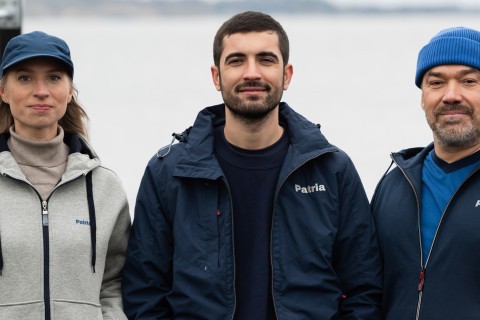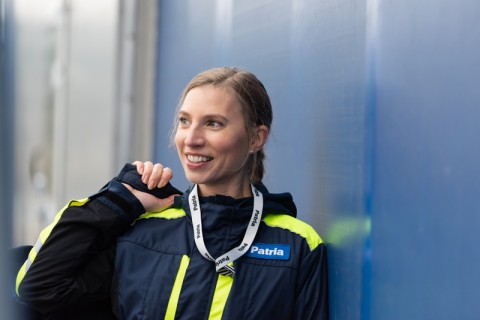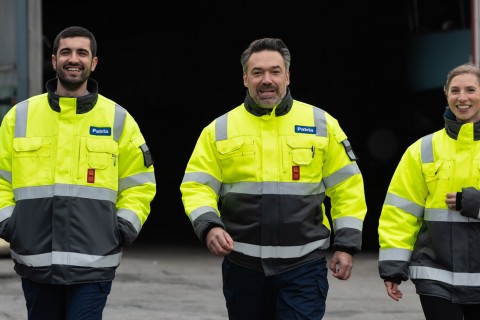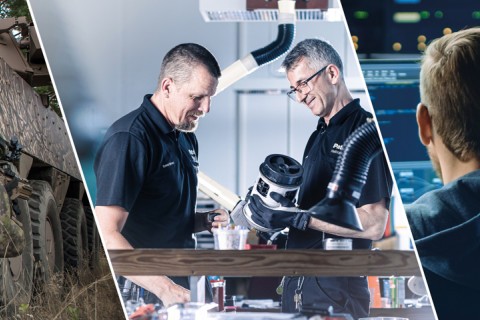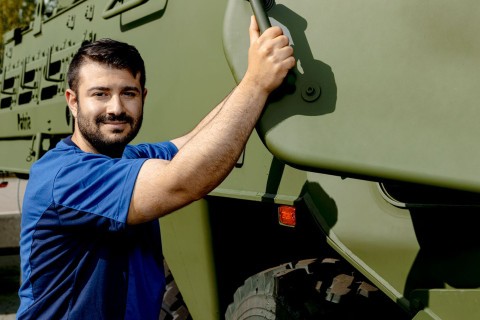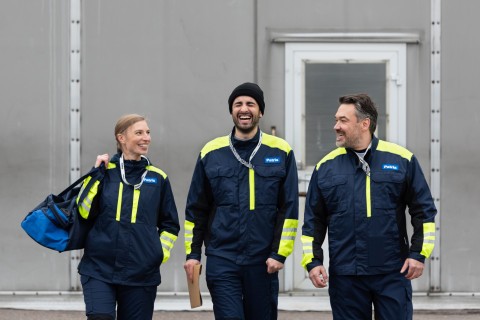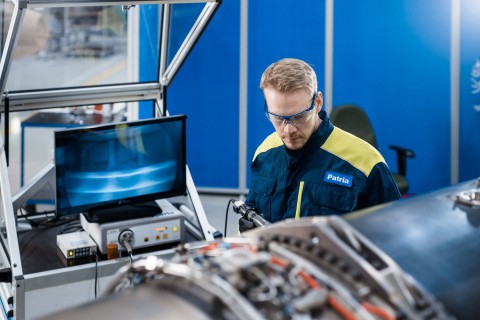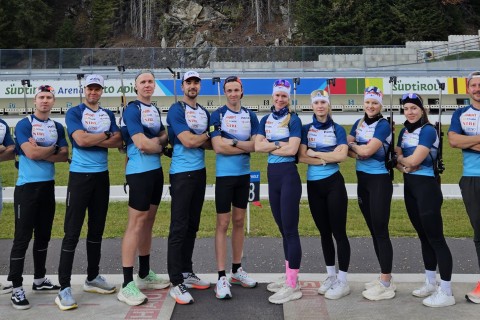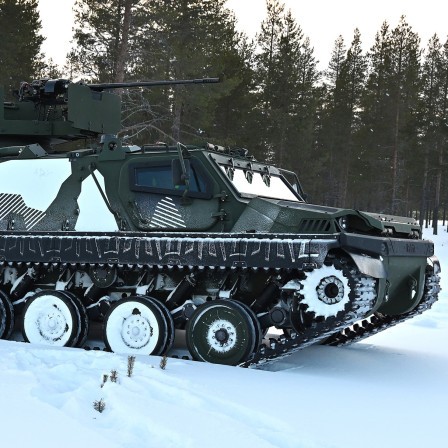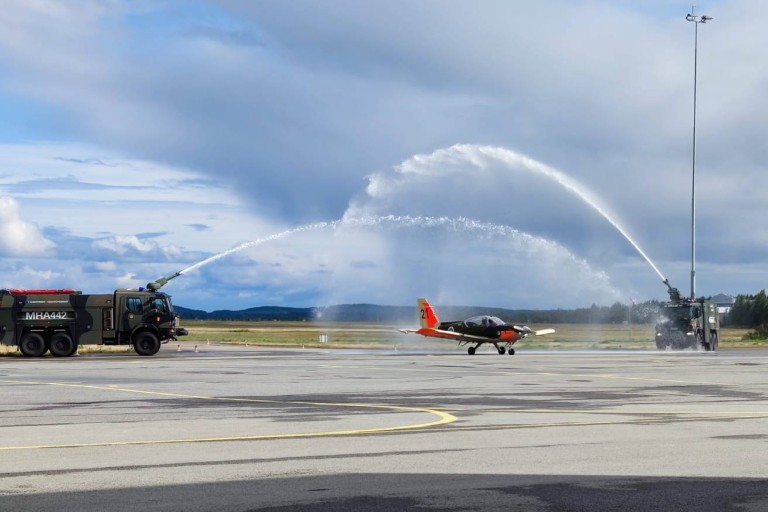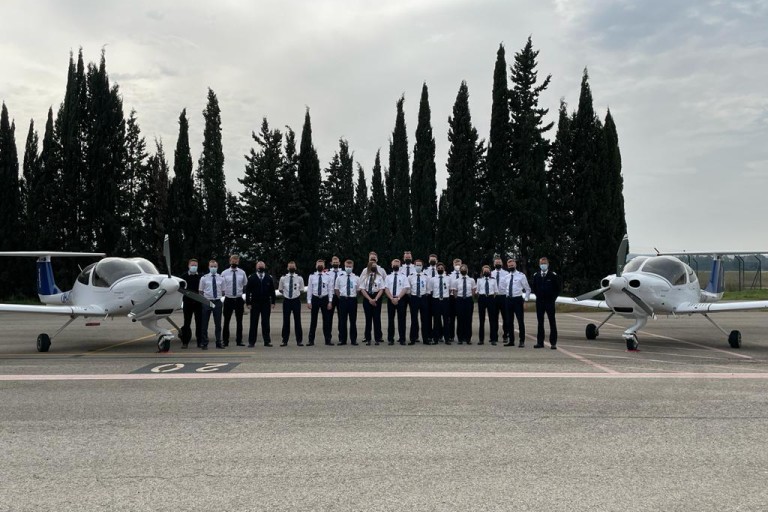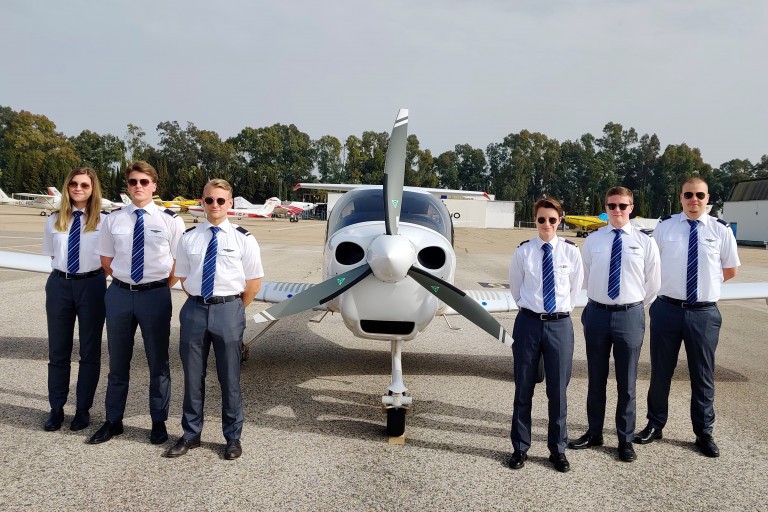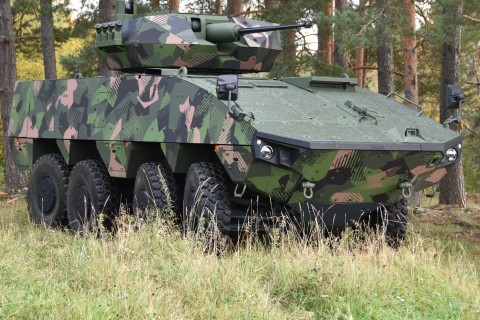
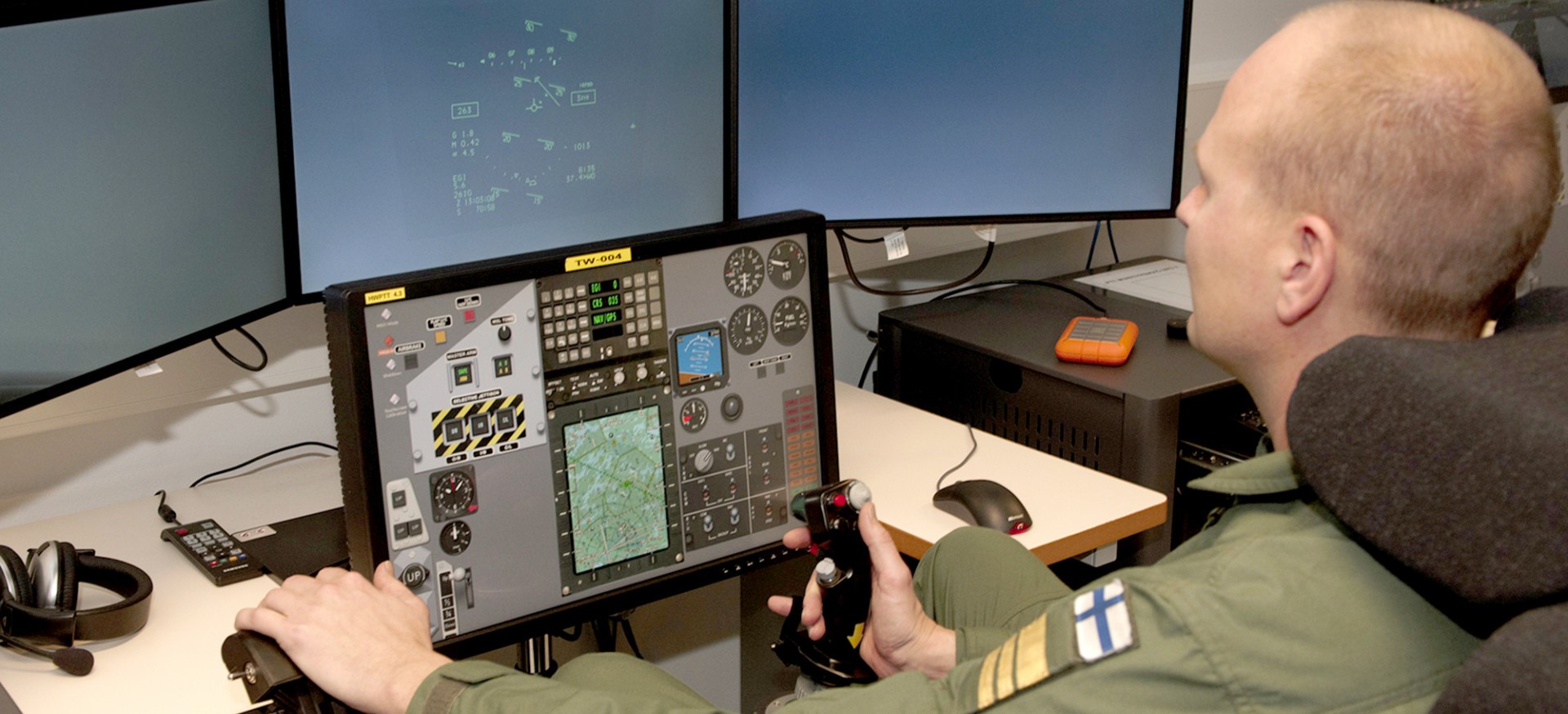
Finnish Air Force and Patria: making Finnish fighter pilot training the best in the world
27.3.2019
The new LVC training system developed by the Finnish Air Force and Patria, which combines live aircraft, simulators and computer modelling, plays a major role in the pursuit of world-class fighter pilot training. In the future, elementary and basic flight training will be provided using aircraft such as the Air Force’s new Grob propeller trainers with avionics thoroughly modernised by Patria.
This is an abridged version of an article published in issue 1/19 of the Siivet magazine. The Finnish Air Force’s pilot training academy is based at Jyväskylä Airport. Patria’s Aviation business unit has been providing elementary and basic flight training there using Vinka aircraft since 2005, and advanced pilot training in Hawk jet trainers is run by the Fighter Squadron 41. The courses are taught in adjacent hangars.
A taste of modern aerial warfare in the cockpit of a propeller trainer
The Vinka fleet is to be replaced by 28 Grob trainers, which are currently being overhauled by Patria. The avionic systems and flight instrument displays of these traditional single-engine trainers, which are used for elementary and basic flight training, are being replaced by modern “glass cockpits” featuring a large screen in the middle showing the positions of other aircraft and their impact on the pilot’s actions. “Although the Air Force is not completely in charge of the system development process, we have had an input in the new Grob cockpit design: what data will be shown on the screens and how. Our strategic partnership with Patria allows us to make any changes we want, which would not be the case had we used a large, foreign supplier”, explains Lieutenant Colonel Teemu Pöysti, Commander of the Fighter Squadron 41. “I am not aware of any other air force in the world that has a flight training system tailored to the competence requirements set by the fighter fleet at such an early stage of training. No other piston engine aircraft in Europe has a cockpit like the one that we have developed for the Grob”, says Jussi Virtanen, Business Development Director, Training and Simulation from Patria’s Aviation business unit.
Focus on situational awareness from the start
The number-one objective of the basic training is situational awareness, i.e. ensuring that pilots know the positions of other aircraft and understand what is going on around them. Pilots need to get to grips with the modern world of information processing and decision-making from the start. Modern aerial warfare requires units to work efficiently together even when they have no visual contact with each other. The Grob fleet allows this element to be introduced to training at an early stage. “This does not mean fewer advanced flying lessons in the Hawk and the Hornet but gives us a chance to take our training further and make more out of the resources that we have in terms of flight hours”, Pöysti explains. The development work of both the Hawk and the Grob aircraft can now be done mainly by the Air Force and Patria cooperation. Software development is often a more cost-effective way to add value to pilot training than upgrading the aircraft’s “hard” systems. The number of flight hours in the Grob will remain the same, but training will focus less on traditional flying skills and more on information processing and situational awareness. Conscripts are required to complete approximately 40 hours of elementary flight training. Cadets’ advanced training includes 50 flight hours in the Grob trainer.
LVC training to combine live aircraft, simulators and computer modelling and flight scenarios as well as other elements of aerial warfare. At the moment, the system enables 18 different elements to be practised simultaneously. The LVC training system and technique, which were developed in Finland with Patria’s help, has enabled the creation of an extensive, realistic and extremely cost-effective operating environment for pilot training. “By combining live aircraft, simulators and computer-assisted enemy targets in a single scenario, we can make our training more realistic using our existing resources”, Pöysti explains. The simulators communicate with real aircraft via a system developed by Patria called Hawk Link. Hawk Link coordinates between the Hawk mission computer and a radio system retired from the Hornet fleet in connection with its Mid-Life Upgrade. According to Patria’s Development Manager Jari-Matti Taskinen, the increased training capacity is more thanks to the software development competence that Finland gained by purchasing the Hawk glass cockpit system than any individual radio system or device. “We have managed to harmonise the software architectures of live aircraft and simulators, which now allows the Air Force to also use their simulators to develop, evaluate and test new features for the Hawk mission system.”
Pilot demonstration in 2018
The first real demonstration of the entire system was run in 2018. The computer-generated constructive elements used for the demonstration included, among others, an airborne early warning and control aircraft. The mission also featured three live Hawk jet trainers. Simulators were used in the exercise interactively with the real aircraft, and the mission commander did their best to coordinate the air combat. One major step forward in terms of training is that the screens now make it possible to analyse how an exercise scenario is unfolding in real time and to see which missiles hit their targets. When a virtual aircraft is hit, its symbol disappears from the screen. Real targets naturally do not disappear, as the shooters are virtual. Each exercise is followed by a debriefing to analyse what occurred during the mission. The instructor has a tool that calculates how many missiles each aircraft shot and how accurately they hit their targets. “Mathematics play a big role in a fighter pilot’s competence, as they need to be able to quickly calculate how to make their missiles hit their targets. The analyses show us how effective our training has been”, Pöysti explains. All exercises are analysed by presenting the scenario to the students using a mission debriefing system. The system shows the positions of aircraft, the effects of weapons and other key parameters in 3D. The latest development is that instructors are now able to monitor missions, control how the exercise scenario unfolds and make changes via their ground station practically in real time. According to Pöysti, there is no other LVC system this sophisticated in use anywhere in the world. “We have an excellent flight training system and the world’s best fighter pilots. Based on feedback from Exercise Red Flag, for example, our pilots’ performance is up there with any other air force in the world.”
Finland leading the field in training
Students beginning their flight training in the next few years will be the first to fly the new aircraft that will replace the Hornet fleet when the HX Fighter Programme is implemented. “The LVC system is just a spearhead that the Air Force is promoting. We have progressed the furthest in the development of these LVC elements and especially in their use”, says squadron leader Pöysti. The next step in the development process is to integrate the new system with the Air Force’s weapons and command systems. The Finnish Defence Forces also hope to use the same training environment to boost the performance of its other branches.
What did you like about the article?
Thank you for your opinion! You can share the article on social media using the buttons below:
